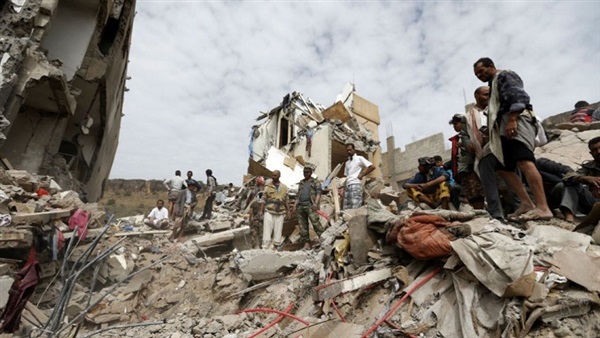Sanaa blast that killed children was not caused by coalition strike

A massive blast that killed 15 children and injured
more than 100 people in the residential Sawan neighborhood in Yemen’s capital,
Sanaa, on April 7, was the result of an explosion in a Houthi controlled
warehouse and not a coalition strike, revealed human rights organizations.
Human Rights Watch and Mwatana for Human Rights
carried on Thursday a detailed report which pointed out that a
Houthi-controlled warehouse that stored volatile material near homes and
schools caught fire and detonated midday resulting in the devastation and human
toll.
The groups could not determine the initial cause of
the fire at the warehouse. Witnesses did not see or hear aircraft, the report
said. The report provides details of what followed: “Scores of Houthi security
forces arrived at the site, fired warning shots, and beat and detained several
people who tried to photograph the warehouse, witnesses said. For several days,
Houthi forces removed large quantities of undisclosed materials from the site
on flatbed trucks, and prevented human rights researchers from accessing the
area until April 11.”
“The Houthi authorities need to provide credible
information and stop storing large concentrations of volatile materials in
densely populated areas,” said Radhya al-Mutawakel, the chairperson of Mwatana
for Human Rights. “The Houthis played a role in the tragedy and should hold
responsible officials to account and provide compensation to victims.”
Mwatana and Human Rights Watch determined, based on
in-person interviews with witnesses, videos, and satellite imagery, that the
contents of the warehouse had caught fire and exploded. The groups were unable
to identify the warehouse contents, but available information shows that they
were flammable and explosive, posing a foreseeable danger to civilians living
and going to school in the area.
The report said there was no evidence at the site to
suggest that it was airstrike or incoming munition. Four videos of the blast
that bystanders recorded and uploaded to the internet within hours also do not
indicate the cause of the fire.
Researchers too did not observe craters that might
have indicated an aerial bomb when they were first able to access the site days
after the explosion.
On the evening of April 7, Al Arabiya had reported
that the coalition spokesperson, Col. Turki al-Malki, stated that the coalition
had not targeted residential areas in Sanaa. The Houthis and some news reports
had at that time attributed the deadly explosion to a coalition airstrike.
“The Houthis’ decision to store volatile material
near homes and schools despite the foreseeable risk to civilians led to the
death and injury of dozens of schoolchildren and adults,” said Bill Van Esveld,
senior children’s rights researcher at Human Rights Watch. “The Houthis should
stop covering up what happened in Sawan and start doing more to protect
civilians under their control.”
On the basis of field interviews with witnesses,
video clips and satellite images, the two organizations found that the contents
of the depot were set on fire and exploded.
They were unable to determine the contents of the
warehouse. Available information indicated the goods were flammable and
explosive, posing an expected threat to civilians living nearby and to those
attending schools near that locality.





